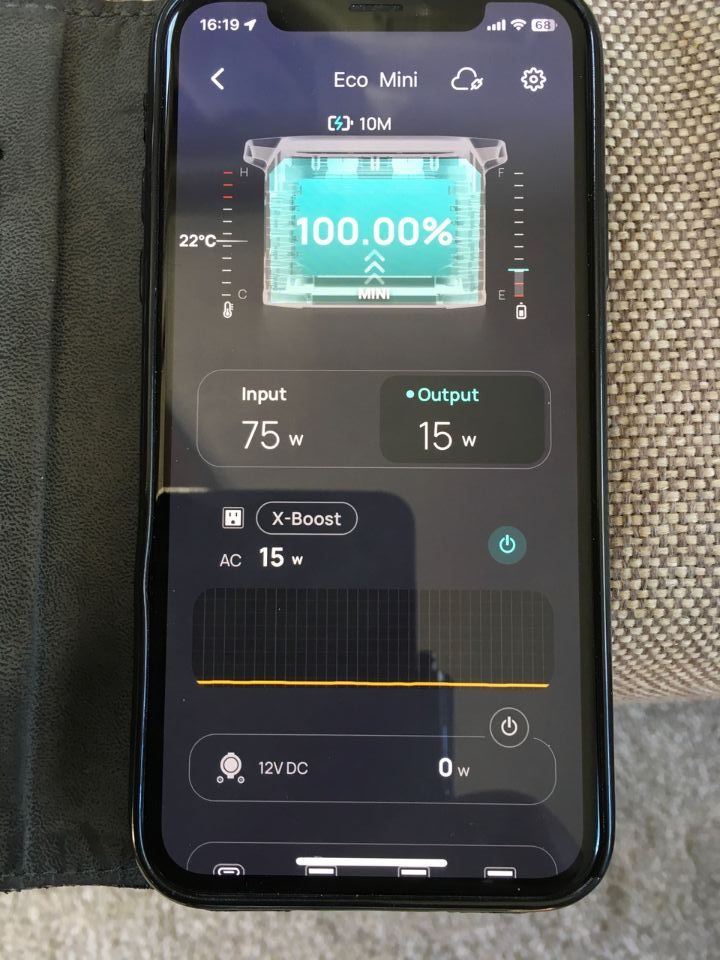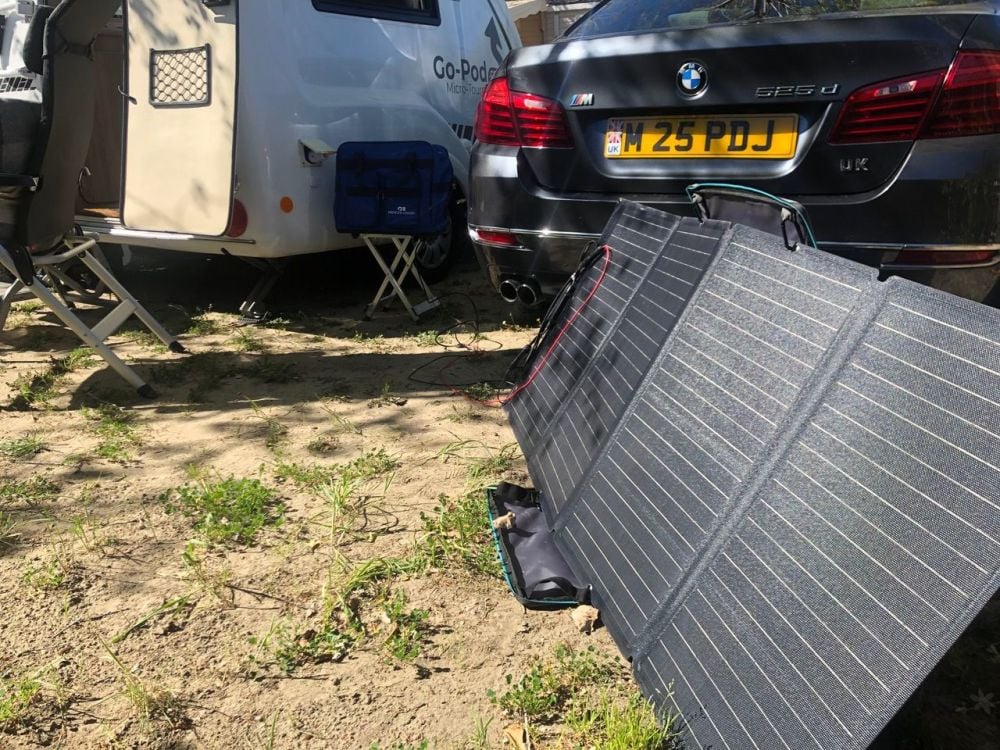Review of the Delta Eco Flow Mini external battery pack
Posted on
By Paul Johnson - Go-Pod owner & site assessor for Alan Rogers Travel Guides. Paul used the Eco Flow Mini during his travels around Europe in Spring 2023, reviewing campsites for Alan Rogers.
I am not going to go into a lot of technical detail, as there are countless videos on You Tube which will give the technical data - this review is about practicality.
1) Does the Delta Eco Flow Mini do what it says on the box ?
The answer to this is : YES!
2) However the main question is, for how long ?
The answer to this question is a little more complex, the Eco Flow pretty much powers anything you have that requires 240v, but the higher the watts the shorter the time period.
So if you want to run your 240v oven, George Forman grill , Internal heater - they are all around 1000 watt to 1300w and require the ‘Boost’ to be engaged. You are likely to only be able to do this for about an 1 to 2 hours maximum, before the unit is empty. (The boost function allows the unit to run at a higher wattage but for a shorter period) - that’s the non-technical way of putting it.
If however you want to charge a Macbook, Camera or any I.T. or use a Hairdryer/Curlers, Kettle, Toaster then you will get a few days without needing to think about charging - great for a weekend away.
The Eco-Flow also has a great app that works on your Smart Phone and this enables you to control the unit remotely and see exact power usage and charging levels, in real time. (see image below)

3) The Game Changer - Sunshine !
Now add a solar panel into the equation and everything changes.
I purchased the Delta 120w portable panel (see photo below) this folds up flat and fits nicely behind the car seat, there are panels with greater wattage up to 300w, but for a higher price.

These panels offer ‘through charging’ which in effect means that although you are using you unit, it is at the same time drawing power from the solar panel, so if you are drawing 90 watt and the sun is out charging at 115 w then in effect there is no draw on the unit.
If you use a higher wattage appliance then the wattage is off-set and obviously the solar recharges the Eco Flow during the day. In full sunshine my 120w panels were generating around 113 watts, general a days sunshine will charge the Eco-Flow back to full.
So to get the maximum out of this concept solar is the key, without solar then you will need to connect to a power source to recharge the unit frequently.
4) Alternative Charging
The unit can be charged from the mains and mine charged from zero to full in just under 90 minutes. This can be increased utilising a rapid charge function built into the unit.
Charging from the car, again this is low voltage (around 9v so you will need to drive all day to fully charge the unit) however if you are just driving a few hours then you will get about 35% charge, which is probably enough to get you though the following evening/day .
6) Would I buy it again ?
The answer to this is YES!
It does offer total independence and an off-grid capability and also the opportunity to use smaller sites where EHU is not available or to stay on an Eco-pitch without hook-up.
At present EHU is probably looking at £4.00 to £5.00 per night so this does save money on pitch fees and over the long term and with cost for EHU going to rise this has to be an option. The Eco Flow also gives you the opportunity to extend your season if you require 240v when many of the larger and club sites close.
I always carry two Camping Gaz bottles in the front locker, however on my last trip I used my Eco-Flow to run my toaster/grill in the morning and boil kettles throughout the day (again a further saving on gas), in this instance recharging from the car as I drove.
(The Eco-Flow also double’s up as a back-up power source in the home during power cuts or for use in the garden (I use it for my strimmer at the end of the garden ). I also intend using it more around the home this summer to charge items such as my electric bike and I.T. items - then recharge via solar.)
7) The Negatives
a) With the solar panels, which I feel are essential to get the maximum benefit, you are looking at around £1400.00 +.
That is a lot of commitment, so you need to be sure you are going to use it.
b) Charging time in the car is slow.
c) Without the Solar option usage is efficient but very limited, larger power packs units obviously have a greater capability, but are more expensive, heavier and bulkier.
8) The Alternatives
There are obviously many alternatives firstly in the Delta Eco Range offering much more power and capability. It really depends on your individual requirements, power output, time factor, recharge speed, size and weight.
(The Delta Mini has now been superseded by a revised model Delta 2 with improved capability, please visit the Delta Eco Flow web site for further information).
I did look at other makes and brands and Jakery came a close second. I chose the Eco Flo primarily because of its ‘boost’ capacity to be able to power something up initially, when an item may create a power surge without tripping out. Other makes within my budget did not seem to have such capability. Also the Eco Flo range can run at a high wattage for a limited periods, many alternatives say 1000 watts that’s it - the Eco Flow can take that up to 8000 watts.
As I said at the beginning this is not a technical review, but hope this offers some guidance as to what points to consider.
9) Go Pod - Specific
Just a few observations in respect of the Go Pod and usage.
When left plugged into the EHU the unit does power the Go Pod as if it were plugged into a mains hook-up (see photo below) with no difference, however the Go-Pod battery does draw charge from the unit and I found the unit was drained to 20% by the morning although I had nothing plugged in overnight - but I did have a full Go-Pod battery in the morning!

So the following evening I placed the unit under the seat (it fits perfectly next to the wheel arch) and used as required - obviously no additional drain on the unit.
It certainly did compliment the Solar system on the Pod offering mains 240v as well as 12v versatility and total independence.

Add a comment: